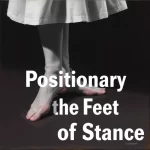How to Remember Ballet Terms

Introduction
Ballet is a beautiful and intricate art form that requires not only physical prowess but also a deep understanding of its terminology. Ballet terms, often derived from French, can be challenging to remember, especially for beginners. However, mastering these terms is crucial for effective communication and progress in ballet. This article aims to provide comprehensive strategies and tips to help you remember ballet terms more effectively.
Understanding the Importance of Ballet Terminology
Why Ballet Terms Matter
Ballet terms are the foundation of ballet technique. They provide a universal language that dancers and instructors use to communicate movements, positions, and techniques. Understanding these terms is essential for:
- Learning and executing movements correctly: Knowing the terms helps you understand what is being asked of you in class.
- Following instructions: Ballet classes often move quickly, and understanding the terminology allows you to keep up.
- Improving technique: Proper understanding of terms leads to better execution and refinement of movements.
- Participating in performances: Clear communication is crucial during rehearsals and performances.
Strategies for Remembering Ballet Terms
1. Break Down the Terms
Many ballet terms are composed of multiple French words. Breaking them down into their components can make them easier to remember. For example, “plié” means “bent” and “relevé” means “raised.” Understanding the literal meanings can help you visualize the movements.
2. Use Flashcards
Flashcards are a tried-and-true method for memorization. Create a set of flashcards with the ballet term on one side and its definition and a visual representation on the other. Regularly review these flashcards to reinforce your memory.
3. Visualize the Movements
Associating terms with their corresponding movements can significantly aid in memorization. When you hear a term, try to visualize yourself performing the movement. This mental imagery can create a stronger connection between the term and the action.
4. Practice Regularly
Repetition is key to memorization. Incorporate the terms into your daily practice. The more you use them, the more familiar they will become. Try to say the terms out loud as you perform the movements.
5. Create Mnemonics
Mnemonics are memory aids that can help you remember complex information. For example, to remember “arabesque,” you might think of an “Arab” standing on one leg. Creating funny or vivid associations can make the terms more memorable.
6. Group Terms by Category
Organizing terms into categories can make them easier to remember. For example, group all the terms related to jumps together (e.g., “jeté,” “sauté,” “assemblé”). This categorization can help you see patterns and relationships between terms.
7. Use Technology
There are numerous apps and online resources designed to help you learn ballet terminology. These tools often include interactive features, such as quizzes and videos, that can enhance your learning experience.
8. Engage in Active Learning
Active learning involves engaging with the material in a hands-on way. Instead of passively reading or listening, try to actively involve yourself in the learning process. This could include teaching the terms to someone else, writing them down repeatedly, or creating a dance routine that incorporates the terms.
Common Ballet Terms and Their Meanings
To get you started, here are some common ballet terms along with their meanings:
- Plié: A bending of the knees.
- Relevé: A rising onto the balls of the feet.
- Arabesque: A position where one leg is extended behind the body.
- Jeté: A jump from one foot to the other.
- Sauté: A jump off both feet, landing on both feet.
- Assemblé: A jump where the feet come together in the air.
- Port de bras: The movement of the arms.
- Adagio: Slow, controlled movements.
- Allegro: Fast, lively movements.
FAQ
How long does it take to learn ballet terminology?
The time it takes to learn ballet terminology varies from person to person. Consistent practice and exposure to the terms can significantly speed up the learning process. On average, it may take a few months of regular practice to become comfortable with basic terms.
Are there any apps that can help me learn ballet terms?
Yes, there are several apps designed to help you learn ballet terminology. Some popular options include “Ballet Lite,” “Ballet Dictionary,” and “Ballet Class.” These apps often include features like flashcards, quizzes, and video demonstrations.
Can I learn ballet terms without taking a class?
While taking a class is the most effective way to learn ballet terms, it is possible to learn them on your own. Utilize online resources, apps, and books to study the terms. However, practicing the movements in a class setting can provide valuable feedback and reinforcement.
What if I forget a term during class?
If you forget a term during class, don’t panic. Pay attention to the instructor’s demonstration and try to follow along. You can also ask for clarification after class. Over time, as you become more familiar with the terms, this will happen less frequently.
How can I practice ballet terms at home?
Practicing ballet terms at home can be very effective. Use flashcards, watch instructional videos, and practice the movements in front of a mirror. Consistent practice at home can reinforce what you learn in class and help you remember the terms more easily.
Conclusion
Remembering ballet terms can be challenging, but with the right strategies and consistent practice, it is entirely achievable. Break down the terms, use flashcards, visualize the movements, and engage in active learning to reinforce your memory. Utilize technology and group terms by category to make the learning process more manageable. By incorporating these techniques into your practice, you’ll find that the terms become second nature, allowing you to focus on perfecting your technique and enjoying the art of ballet.





